Games That Weren’t has been running for a quarter of a century this year, which is not only staggering, but also a bit scary if I’m honest. For 25 years (much longer if you count preservation work before the online archive), we have been documenting and preserving as much unreleased software as we can for a variety of platforms. Though it all began with just the Commodore 64 at the start, the machine I grew up with and still play today.
When first starting out, I never quite expected this to be a project with no end in sight (which isn’t great for someone who has ‘completist‘ elements to their personality), but that is indeed exactly what Games That Weren’t is. No matter how many games we manage to save and preserve their stories, we will never capture them all, and tragically there will be many that are forever lost.
There are so many unreleased games out there, and quite often I get people get in touch and ask “Why haven’t you covered X game on the site?“, and probably always will do. Regardless of scrambling to try and cover what we can, it has been a fun and exciting 25 years of trying to do as much as possible during our free time to preserve gaming history.
To mark this milestone, I thought I’d share how everything started and gradually progressed over the years, including some of our highlights and major findings along the way. Separately I’ve done a video covering the same sort of thing in a more visual way, if you need boring monotonous ramblings to send you calmly to sleep.
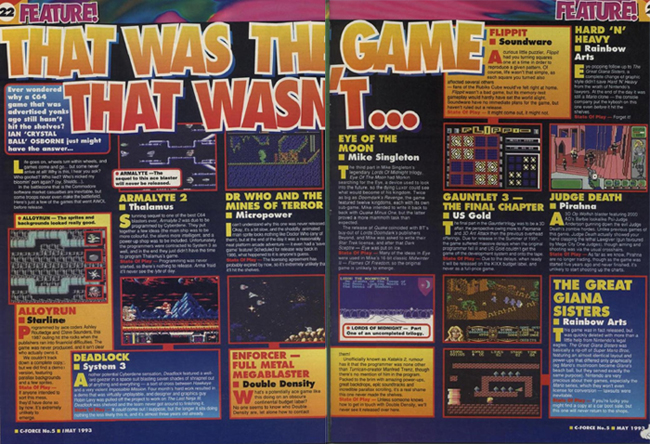
As has been well documented in the past (and to death!) on our About page, it was Ian Osborne’s “That Was The Game That Wasn’t” article that first inspired interest in the area of unreleased games to a young 11 year old version of myself. I was surprised to learn that there were games being made, and sometimes even completed, which we apparently had no chance of being able to play. The fact that we supposedly couldn’t play them, made me more curious and wanting to know exactly what those games were like. Were we missing a potential classic of our time, or had we been spared for instance?
I had started asking friends and contacts in the Commodore 64 scene if they had any of the games in the article, or any information at all on them, and to my surprise – many would dig out copies of what had been leaked to the world of those said games. Being able to play the likes of Gauntlet 3 and Alloyrun was very exciting during our pre-internet days, and ensured that I caught the “bug”. I would continue to investigate old magazines and search for others that had got away to try and preserve.
It became clear that Ian’s article had only scratched the surface, and after building a small note book of information, I offered to write a regular feature for Commodore Zone magazine, which was being ran by Jason Kelk and Jason (Kenz) Mackenzie during the mid-late 1990s. They were always looking for contributed content for the magazine, and I loved the idea of writing for one after falling in love with the likes of Commodore Format and Zzap!64 as a kid and wanting to be a staff writer – especially for Commodore Format.
My feature planned to essentially be a follow-on to Ian’s original article, covering a number of titles and explaining what happened to them, but with my own name and twist to it. When thinking of a name for the article, it was my brother-in-law Colin who coined the name. I had been also writing a feature on crap Commodore 64 games too, which Colin wittingly had came up with the title of “Cream of the Crap” for. “Games That Weren’t” was his other suggestion for the unreleased games feature that I was now also preparing, and which fit perfectly.
The first installment of the article was published in issue 11 of Commodore Zone back in Spring 1998 and would run across six issues in total, before Jason Mackenzie decided to shut down the magazine around 2001 and move onto new projects. I was only around 16 at the time, and my writing wasn’t exactly the best in the world, but I enjoyed doing the features, sharing what I had learnt and seeing everything in print.
Jason Mackenzie has very kindly allowed us to add scans of those original articles for our anniversary, and which you can find below. Looking back at them after all this time, the quality is a little embarrassing and I got it wrong quite a few times for some of the games, but this was where it all began in terms of Games That Weren’t:
By the summer of 1998, I had finished secondary school and was off to college in the September to study GNVQ Advanced IT and A-Level Art. Around the same time, I had recently got hold of a PC after saving up for over a year, and the internet was beginning to become much more accessible.
Dixons had just launched something called “Freeserve“, which was a game changer for me and allowed me to get online without hefty monthly charges (apart from the phone bill – which my mum almost killed me a few times about!). I was also learning how to do basic web pages and began getting interested in setting up my very own website.
Launch of the Games That Weren’t website and the early days
At the time, I was making my own games on the Commodore 64, as well as doing various activities to try and keep the machine alive during some pretty dark days, where there was hardly any new software being released. Of course, that has completely changed today, but back then there were practically no games like we had back in the commercial era. I set up a quick website for my gaming label to host my games, share Commodore 64 news and more. All of it was built just using Microsoft Word 1997 of all things!
Along with those areas on the site, I felt it was a great opportunity to give the Games That Weren’t feature an online presence, sharing some of the various unreleased games and previews in one place for people to download. Towards the end of 1999, Games That Weren’t as a preservation project was born. I think we may have even been one of the first ever unreleased games archives as a result.
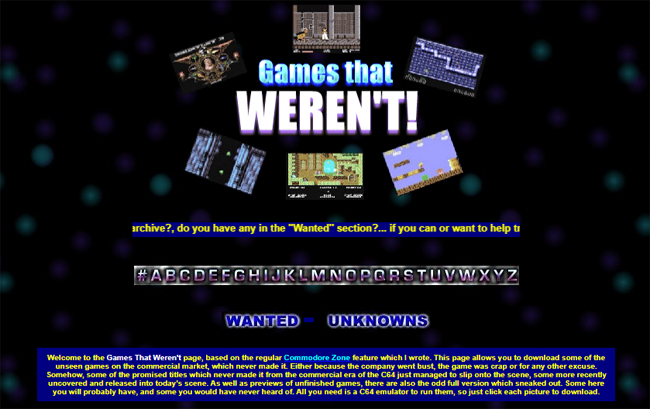
During the early months, you could only download the games from a simple set of A-Z pages – though shortly after, we began adding review pages which had more textual details about each release. Gradually all entries would have a review page created, with a download link at the end and a couple of screenshots. Bits of the site have been saved by Wayback Machine from 2000 onwards which you can see here. We also have most of the old site pages preserved in my own personal digital archives.
I’m not sure why I was surprised, considering the openness of the Internet, but I began to get a good stream of emails from people on a regular basis, contributing suggestions to add to the archive. These often included a download to add to the site, a snippet of information or a magazine scan. As a result, the site began to grow quite rapidly, and also lead to some unexpected results…
As well as the general public, over time we began to get developers, artists, musicians and project leaders themselves who had worked on some of the titles we were featuring (or hadn’t yet included) getting in touch to contribute their stories, or even provide disks/digital copies of their unreleased works. This helped the site to grow further, and other games creators seeing their peers contributing would encourage them to get in touch too.
We began to get a team brought together as well to help with the site, with the likes of David Simmons and Andrew Fisher joining the ranks to help with research and recovering titles for the archive. The team has continued to grow over the years, and saw further additions in later years including: Fabrizio Bartoloni, Peter Weighill, Gary Spence, Karl Kuras, Grzegorz Antosiewicz, Ross Sillifant, Adrian Simpson and Alex Ross. You can read more about the team members here.
During the same time as when the site was launched, I was becoming aware that my own C64 disks and work tapes would not last forever, and so I had a desire to get everything backed up onto PC to share with others, but also have a digital backup of my own. I ended up purchasing a special Parallel port cable from a chap called Joe Forster that hooked up my PC to my 1541 disk drive, and used a piece of software called Star Commander (https://sta.c64.org/sc.html) to start backing up some of my disks. Tapes were done through an XE version of the cable and a copy of MTAP.
This was useful timing, as I started to get sent copies of people’s work disks and tapes with previews and other such files, and was often asked to preserve someone’s only potential copy of their work. The rig allowed me to start doing actual preservation work of other media too for the first time.
As well as unreleased games, I was also preserving Commodore 64 and VIC-20 games too from my own collection for Gamebase 64 and 20. I have continued to preserve released software where I can for both platforms to this very day (sometimes purchasing obscure released titles when they pop up on Ebay or similar to preserve), along with finding un-preserved SID tunes for HVSC and demos not yet in CSDB.
During the early days, I couldn’t quite afford a scanner, so magazines (before the days of Stephen “Mort” Stuttard’s amazing scans being easily accessible) were taken into college and scanned there – before I think I eventually got one from one of my first part-time job pay packets in 2000.
One of the earliest memories I recall is when Dan Phillips and Robin Levy got in touch around 2000 to share information on the likes of Deadlock and Armalyte 2. Deadlock was one of the games from Ian’s original article that really stood out for me thanks to Robin’s amazing graphics. I was so desperate to play the game, and there was now an opportunity for that to come true.
Imagine the excitement when Dan dug out digital screenshots of Deadlock from various previews he had preserved from his work disks! However, there was to be a bit of a break with the site to come as a number of key life events would take place.
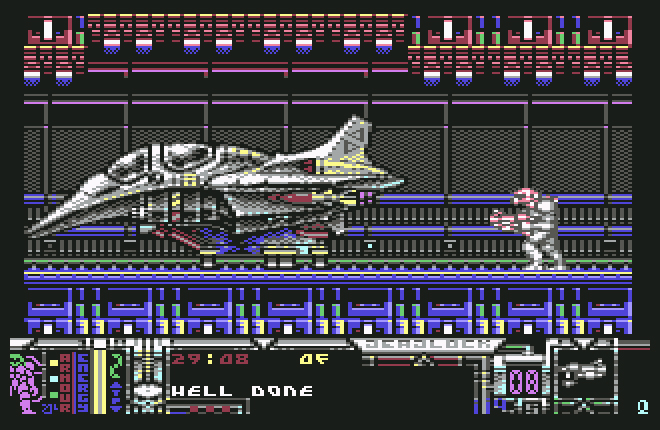
Some of first big releases into the archive at this time would be the likes of Armalyte 2 (a very early preview) which Dan had first dug out for us, Lazytech (a very cool Katakis style game), and Slidez and Humblebug (from Jon Wells). It wasn’t always previews/games, but also assets too that were recovered – including novella for The Search for Sharla. Seeing many of these things for the first time was very exciting, but also being able to share with others was great too, and was met with a lot of enthusiasm.
Breaking for education and family life
By early 2000, I was often out down the pub and night clubs most Friday/Saturday nights, as many of my age were also doing and dancing terribly too. So, on top of doing a part-time job and a college course, there wasn’t masses of time to run a digital archive as it was.
By the end of the year, I was doing a University course on computing/multi-media, where things would ramp up further, and time became less and less. By late 2001, the University course was taking a stranglehold, and I also had the news that I was due to become a father in 2002. It was exciting (and scary!) times ahead, but crucially meant something had to give for a bit behind the scenes. The site remained live, but the updates ground to a crawl for a good while.
There were reports at the time that I had left the Commodore 64 community completely and closed Games That Weren’t down, but that wasn’t quite the case. I still had unfinished business and really enjoyed hunting for all these lost titles. I just had no time… for a bit. Whilst I was away, the plan was to hand things over to someone else temporarily to keep it all going, but that didn’t quite pan out. To be honest, I’ve completely forgotten about that, until I found the old threads on Lemon 64.
During these early days, Games That Weren’t was originally part of a larger site called “Cyber Systems“, which was a sort of ‘group’ I had made up to release my own Commodore 64 games under and try and keep the machine alive.
By late 2002, I felt things were beginning to settle with University and with my future wife and new-born daughter. A bonus was that we had long summer breaks, so I decided to try and get back into doing some of the site again. This time though – I had now decided to move away from Cyber Systems and from doing C64 games, and instead focus purely on preservation work and Games That Weren’t as my main hobby and projects. I didn’t have time to do the rest any longer.
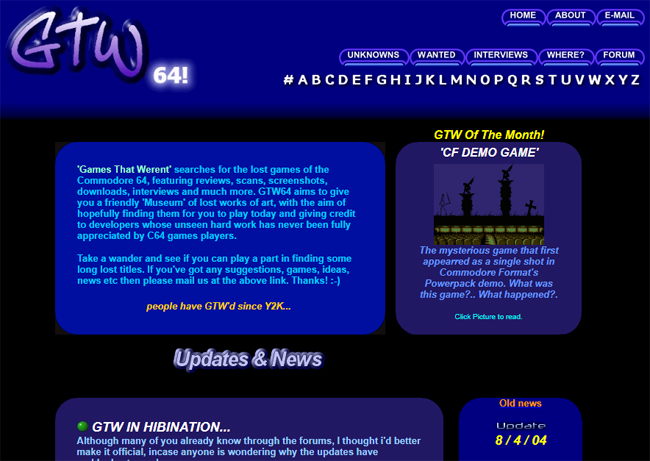
Going into 2003, University was a huge challenge whilst bringing up a young child and juggling a part-time job to pay the bills, but I was still finding pockets of free time here and there. My IT skills were improving as a result of the courses, and so there was an itch to try and improve the rather archaic looking site and jazz it up a little. With another long summer break, I got to work on a new and improved version of the site.
By August, we relaunched with a new design at last (with around 382 entries on the site) and the updates began to resume at a reasonable pace once more. Here is a snapshot thanks to Internet Archive.
There was elation mixed with sadness upon launch of the site, which became a tribute to the late graphic artist Martin Holland who had tragically passed away just days before the relaunch. Martin had been a fantastic help during our early formative years, helping put us in touch with many people from the industry and was always a friendly voice for advice. You can read more about Martin in our special tribute here.
The launch got a great reception, and I think those following us on Lemon 64 were relieved that I hadn’t done a complete disappearing act, and was indeed “sticking around”! Not long afterwards, there was the first opportunity for the archive to expand beyond just the Commodore 64 platform.
Adrian Simpson got in touch regarding setting up an Amiga GTW archive, which he would eventually go on to launch in October 2005, and which is still running today at https://amiga.abime.net/agtw as a companion site. Adrian has documented many big Amiga titles over the years, reporting on big findings for the platform too as a whole.
Getting back into the update groove
After only a few months, possibly our biggest recoveries and releases so far on the site would occur. Around 2000, artist Haydn Dalton had got in touch with the shock revelation that Solar Jetman had been fully completed on the Commodore 64 (with himself as lead artist).
At the time, we only ever saw news snippets relating to the game, so didn’t expect it to have got very far (if indeed started at all), so to hear it was fully playable was amazing. I remember it being rather deflating though when Haydn (and developer John Buckley) confirmed at the start that they no longer had anything of the game.
Fast forward to the end of 2003, where Haydn is starting to prepare for a move to the US. He finds a set of disks labelled for the game within a briefcase stuffed behind a radiator of all places, which must have been taken to a gaming show back in 1991. In an excited hurry, Haydn sent the disks by recorded delivery and we were able to back up a complete conversion of the Commodore 64 game.
I cannot tell you how magical it was to see the loading screen come up for the very first time and Geoff Follin’s haunting music kick in. I can still remember it clear as day in the small little box gaming room I was working in at the time within our first rented accommodation.
Then to top it all off, Dan Phillips had finally sorted all of his Deadlock demos and prototypes out and passed them over to us to add to the website to accompany the Armalyte 2 preview he had recovered a few years earlier. It is a very surreal feeling when you get to see screenshots from an old Zzap!64 magazine poured over for years, suddenly become very real and interactive. Christmas 2003 became one of the most memorable updates that we did as a result.
And on the subject of Christmas (and going off on a slight tangent), every year I have always enjoyed trying to put together a large update for the Christmas break with as much as possible in the way of new prototypes, and even full unreleased games. If something came through in October/November, i’d try and save it until then – so it felt like we were giving a present to the community in some way. We still do this today as much as we can and has been a tradition since pretty much the start of the archive.
Swiftly jumping back to our history timeline…
From 2004 onwards, things snowballed. Firstly, the long lost Tyger Tyger was recovered and fully rebuilt by Jani Tahvanainen and Henrik Jansson from source code provided by Jason Kelk. Jason had been given all the remaining PDS source code from developer Gary Liddon years before, and Jani and Henrik would work wonders to piece everything together. It wasn’t complete or very playable, but there was plenty to see and explore, and was as magical as seeing Deadlock in action for the first time.
There were also breakthroughs with the likes of Mega Twins and Murder!, as the names of developers would finally come to light. We started to find the likes of Roy Bannon, who had been developing Batman Returns. We also learnt that Colin Porch was the developer for Parasol Stars, and that the game was destroyed in a bizarre domestic dispute, with the tragic news he had just recently binned any old C64 disks months before we had found him.
A huge bundle of Alligata Software master disks were also saved and preserved (thanks to a kind loan by James Grayson), including a long lost Circus Charlie clone in the form of Circus Fun. Parts of Daffy Duck would surface with the artwork masters being dug out by David Palmer as well.
Cyberdyne Warrior’s long lost intro sequence was saved thanks to Jason Mackenzie, and Chris and Tony West revealed their unreleased sequel to R.I.S.K (BOMB – which is now due to be finished and released by Thalamus!). Lots was happening, and some big mysteries were starting to be solved along the way.
Writing for Retro Gamer magazine and an “Article That Wasn’t”
During its first launch period via Live Publishing and with Martyn Carroll at the editing helm (between 2004-2005), I was asked to write a regular Games That Weren’t feature to cover multiple platforms. Each issue covered about 4-5 games in total, and we revealed titles for the first time such as Moto-X for the SNES, including video footage thanks to Ste Ruddy on the DVD covermount. Unfortunately, due to the collapse of Live, the bonus of getting a bit of payment for the articles never quite happened.
Martyn has very kindly allowed me to show for the first time the very last article that was all page set and ready for the Live Publishing issue 19 that never was, and that didn’t make it due to the collapse. Call it an “Article That Wasn’t” if you like!
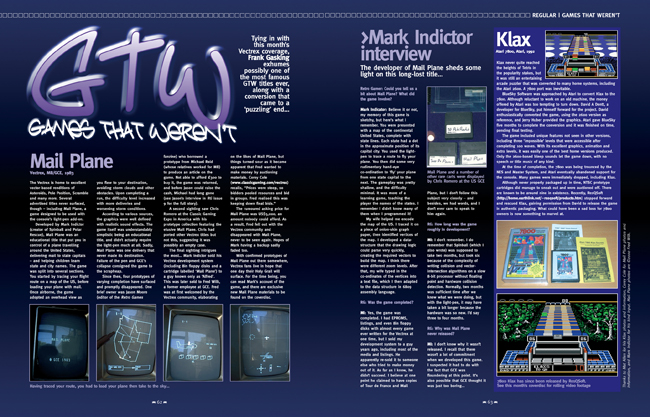
There was opportunity to carry on doing unreleased articles for Retro Gamer once the magazine was resurrected, after signing a new freelance contract. Though after expanding on the Mail Plane piece for a “Whatever Happened To…” article, I decided to focus more on the site and preservation work as a whole. Time was limited enough as it was, so the magazine side of things became mostly restricted to contributing and helping others with their research and information. Only in recent years have I started doing some articles again from time to time.
The introduction of an Amiga companion site (thanks to Adrian) had reminded me of an itch I had long wanted to scratch. For a while, I had wanted to create a news portal to cover unreleased games news across all platforms, to act as an umbrella site for all our sub-sites and also via other online archives to share news of other findings and post entries for other platforms.
By 2005, I was now working as a web developer full time and had the confidence to write scripts and migrate everything to a database with dynamic pages instead of flat HTML files for every page – which was a massive pain in the backside to maintain.
Time was an issue as it has always been, but eventually in July 2006 an initial main GTW site dedicated to all platforms was born to live alongside the C64 archive that had been going for almost 7 years at that point. Over time there would be various improvements on the site and navigation, to try and expose the archive in various ways and encourage discovery of titles you were not necessarily looking for. However, the C64 archive was for now still flat HTML, and a much bigger job for another day.
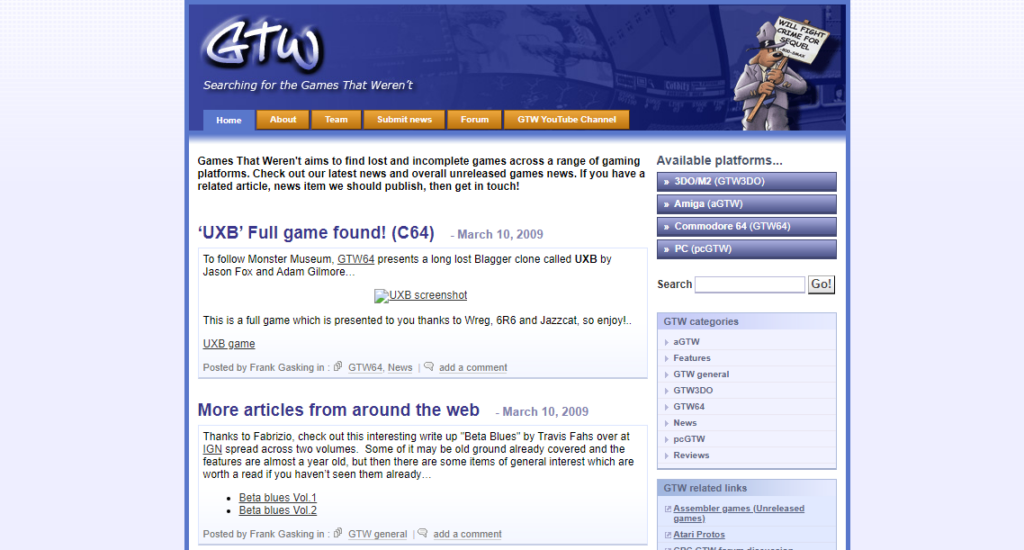
In addition to news from other sites, we started to add our own entries for games across different platforms. Some of the first content would be extensions of some of the write ups that had been written for Retro Gamer magazine.
It was during this time that our hosting had been previously a bit all over the place, and would move to several places over the years. Ejber Ozkan and Timo Weirich would kindly help with hosting for a number of years, with Timo also helping expand the family of companion sites for different platforms. Timo ran PC GTW for several years, as well as a 3DO M2 specific archive site in 2008 (sadly both no longer exist, but can be found on the Wayback Machine via the links above)
As the years rolled by from 2006 onwards, the recoveries were still coming thick and fast. Fungus 2 was preserved by GTW from Karl Hornell’s disks, then there was the huge reconstruction and recovery of Imagework’s Devious Designs, which was carefully reconstructed by the developer Pete Baron, and Glenn Rune Gallefoss for GTW over several months.
Not quite Daffy Duck – there was then a surprise recovery with the full game of Bugs Bunny: Private Detective, giving hope that the elusive duck was about to be found very soon (it wasn’t!). Many titles from Harold Klink and Martijn Althuizen were also preserved, with possibly the largest preservation effort I had done at that point – where essentially I was preserving an entire personal work disk collection (something which I would end up doing a lot more of over the years!).
Captain Dynamo 2 was found in bizarre circumstances and was “un-deleted” from a set of disks sent by Wayne Billingham. An Ocean Software game of Liverpool FC was oddly found (when one of the owners of Ocean was a co-owner at Everton). A complete budget game from the developer of Murder! (Chris Walsh) in the form of Bobby Bounce Back was saved, and the original origins of Cascade’s TRAZ was recovered through the release of Slideways.
Then another major finding would occur in 2009 with the release of Palace Software’s Monster Museum, written by C64 Dan Dare developer Andy Wilson, with graphics by Gary Carr and previously unheard sounds by the late Richard Joseph. The game interestingly featured a main protagonist which looked rather like Lara Croft, long before Tomb Raider ever existed.
The original origins of Virgin Mastertronic’s Spot was also saved with the release of Infection (containing another lost piece of music, this time by David Whittaker). Our investigations and prodding with Jon Wells about his abandoned Wild Bunch conversion would lead to him picking up the game and finishing off, releasing through Psytronik in 2009.
And on it went – with the full recovery and release of The Bubbler. After GTW preserved all of the work disks relating to the game, developer Matt Young and Sailor/Triad would piece the game together and get it running in its final state for GTW. Although feeling like you are wading through treacle when playing, it was a major finding of a game long rumored to have been converted to the Commodore 64, but with no evidence anything was started.
There was then the odd abandoned conversion of Arkanoid that was being done for Firebird. Then finally, source code to Ocean’s Streethawk was recovered – though without the graphics, it sadly wasn’t going to be on the site any time soon. Soon, the findings, recoveries and updates would all become a blur as the archive continued to grow and grow. What we have mentioned so far is just a small portion of what has been recovered over the years.
As we strode into 2010, I would finally move everything to more permanent hosting. The plan was to try and merge in the then separate Commodore 64 site and archive into one large and single maintainable site. This required a lot of scripts and processes to extract out the content from the old archaic HTML pages and into a new database structure.
Once the bulk of the content was brought over and tidied up, the old site was retired and finally after a lot of late nights – the migration of GTW64 was completed by October 2012. It wasn’t perfect, but it was a start – a lot cleaner and fresher, and with a much better process for publishing and updating content compared to the old flat HTML file route.
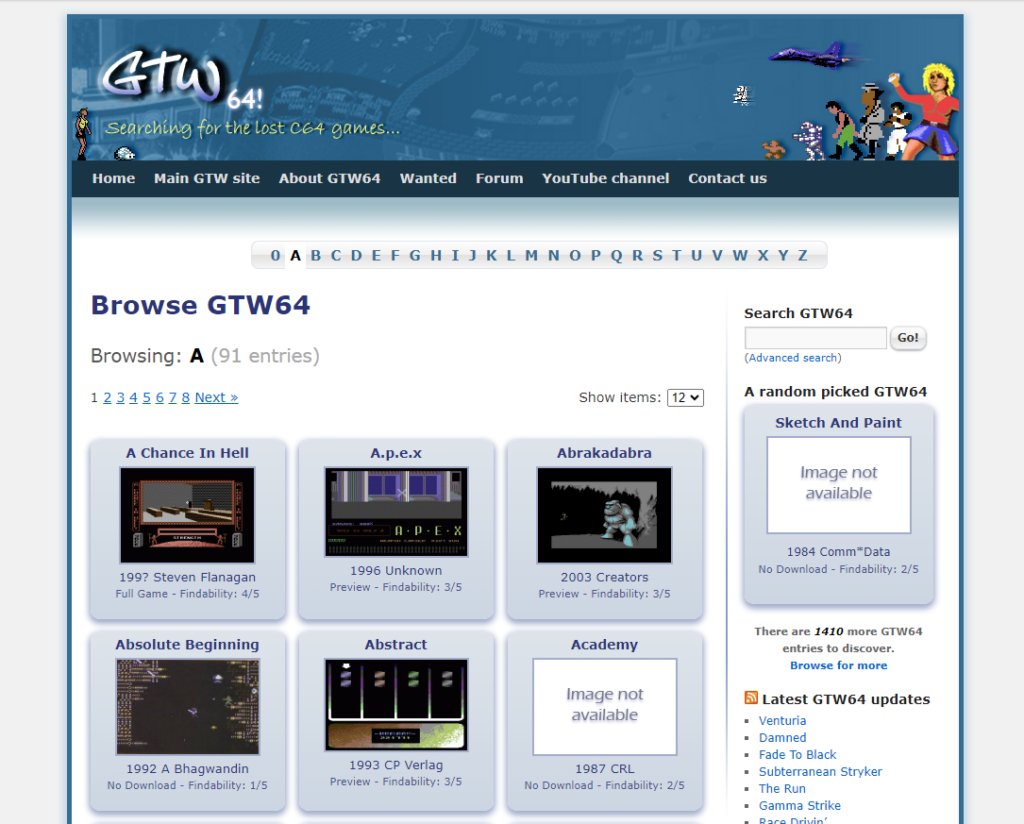
Over time, the site would see further tweaks and adjustments to work with modern day browsers and mobile devices, adding improvements where we could to make the archive better for searching and finding materials. The process is always ongoing, and small tweaks and adjustments continue to be made today.
Whilst also covering unreleased games, we started covering titles that may have been released, but were not yet digitally preserved – mostly from a Commodore 64 point of view. Some posts became searches for a series of titles from companies which were not yet in Gamebase 64. These became a great way of also saving more software, with preservation efforts by ourselves, but also the likes of Allan Pinkerton and many others – who would preserve disks and inlays and send them over for us to add to the site.
Part of that preservation work included saving all of the games from VIC-20 publisher Micro-Antics, and in 2024 – we did a large feature on the company and presented all the games together digitally for the very first time. What was it to do with unreleased games? Not much, but there was an unreleased game within the recovery work! ;-)
A mid-life crisis, and a book?
By 2013, I wasn’t quite having a mid-life crisis just yet, but probably wasn’t far off. However, I was aware that I was working in an industry where nothing was particularly “permanent”. Although we thankfully have wonderful projects such as the Internet Archive, it is still a very volatile space that we work in. I had built sites for work that had a limited shelf life, and then would just disappear for good.
I wanted to do something physical as a sort of “magnum opus” – something that would be perhaps around a bit longer than a website. I was also slowly creeping towards 40 and wanted to leave a mark and say “I Woz Ere” in some way in case I “kegged it” (technical term) any time soon. Sounds morbid I know, but you come to a point in life where you think about these things more.
From this, I had the crazy idea to write a book on the subject of unreleased games, having no idea how much work this would entail or how it would look exactly. It wasn’t just to be regurgitated content from the website, but fresh content and at a high level of detail, with input from those directly involved. Additionally, I wanted to cover all formats across the key decades of the games industry so far.
It soon became clear just how much work this was going to be, and so I had to cut back on time with the digital archive to compensate, as well as posting on social media.
However, whilst about to embark on a project that I had no time really to do, we started doing small Games That Weren’t exhibitions at the PLAY Expos held in the UK at the likes of Manchester, Margate and Blackpool. Over a period of around 5 years or so and with the help of the PLAY Expo team, I would often do a stand next to Jason Kelk (who ran the Old School Gaming stand), showcasing various unreleased games across a few platforms.
I no longer do the stands today, but they were a lot of fun and I enjoyed being able to go into the venue before it opened and have a sneaky game on the arcade machines like a giddy kid. It was also really lovely to meet so many people who had helped over the years with the archive in person, as well as make new friends too. We almost managed to convince the Streethawk artist (Steve Wahid) to dig out his disks at one event – but it wasn’t to be!
Here you can see a Flickr gallery that I created from our first event in 2013:
One of the things I learnt as a harsh lesson was never to take originals with you. I had taken my original copy of Commodore Zone, which included our very first article and had it on show. Before I knew it, someone had gone off with it – probably because it was a Star Wars special.
Recovery of the “holy grail” of Commodore 64 games
I’ve already mentioned many of the big findings from our early years, and trying to document a complete timeline of all the big findings for this piece would mean i’d never finish this article. However, it was part-way through writing the book that possibly our greatest finding of all time and “holy grail” was finally recovered.
2015 saw the recovery and release of Hi-Tec’s Daffy Duck, which had been missing by this point for 18 years. We had tried for years to find it, and had tracked down everyone involved. There had even been a few fake website auctions and claims of multiple review copies existing (which wasn’t the case). We had already recovered another Hi-Tec game of Bugs Bunny: Private Detective years previous, but Daffy remained elusive and it seemed no-one had it any longer after numerous searches.
I decided to cover the game in the book, but across all the platforms it was due out for. I spoke once more with C64 artist Ashley Routledge, who had casually dropped into his answers that he had recently located all his work disks at the back of his attic.
I offered to preserve all his disks (so he had everything backed up digitally), so to also have opportunity to see if Daffy Duck was there once and for all (which he felt sure it wouldn’t be). Little did we know that the developer, David Saunders (who previously said he no longer had anything of his old code) had given Ash a complete backup of his code many years ago.
They had both forgot, and thankfully that was how the game would be recovered (as Ash’s own disks only had a preview build and graphical work – but no full game or actual code). I had met Ash and Dave in Leamington Spa, and I still remember Ash handing over the case of disks, and Dave’s disks … and Dave grinning and saying to me “You’ve hit the jackpot there!“.
It certainly felt like that, and thanks to the amazing work of Martin Pugh, the game was fully reconstructed from the recovered sources. There had been times where I looked back at the Zzap!64 review just a few years before and kept thinking that it just wasn’t going to be – but it proved that we should never give up hope.
After the excitement of Daffy’s recovery and posts on various news sites, attention now switched to finding the other “Holy Grail” in the form of U.S. Gold’s Murder. Though as the years have gone on, it has become clear that it will take something even more miraculous than finding a briefcase with a disk stuffed behind a radiator to see the game saved. But then you just never know!
However, we did manage to recover the famous Sigue Sigue Sputnik game, or at least the remains of it just a few months later when preserving many disks from the personal collection of Darren Melbourne. In the meantime as well, the book was still eating up a lot of time, but as I neared 2019 – completion was finally in sight. It became apparent that the 20th anniversary was creeping up for the archive too, so it all felt like “aligning of the planets” … or something like that…
A site spruce up and a book launch
Just before the launch of the book, I felt that the website needed sprucing up to make a bit more professional (or as much as a non-web designer could do anyway), so what you currently see now (at the time of 01/05/24) is pretty much the result of that, with some other smaller tweaks and adjustments over the years since.
Bitmap Books would eventually publish Games That Weren’t with all its 644 pages and fluorescent green ink in 2020. Sam Dyer was brilliant to work with, and i’m really happy that he had faith in what I was doing and what I wanted to try and achieve. I will never forget being sent a completely blank copy of the book to sign off on the paper! (and wish I could find it to show a photo!)

I am still very humbled by the response the book has had, and continues to do so today – where at the time of writing this post, the book is now on its 3rd print run. I recall sleepless nights that Sam was going to be left with a warehouse full of books for the 1st run, so to get this far was something else. I loved seeing people posting on social media, taking photos of their copies, and it was a wonderful couple of months or so and a great buzz too.
As part of the book launch, each week I would add bonus content to the site with materials that didn’t quite make it to print, which I hope gave readers something extra to look forward to. It meant that we could showcase the likes of Stunt Car Racer Pro, Green Lantern (SNES) and Dick Special in action for the very first time, along with other titles that were featured.
The launch additionally led to promotional opportunities to help spread the word about the archive and the book, with numerous pod/videocasts (here are two of them: one with The Retro Hour, and another with Maximum Powerup), and writing articles for the likes of Good Old Games and Official PlayStation magazine – all of which would help archive in a positive way.
The popularity of the book and other events led to a great increase in contributions and research, with many developers/artists/project managers coming forward to give their input – some of which I will mention a bit further on.
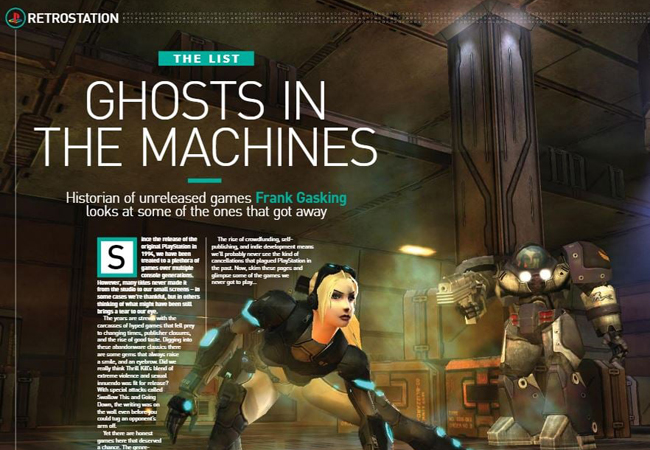
The book though had been released during a point where the world was in a very dark place and unknown territory with COVID-19. My friend Jason Kelk would contract the virus, and became hospitalized during the early part of 2020. I’d known Jason since 1994, and it was he and Jason Mackenzie that had created Commodore Zone magazine and gave Games That Weren’t its first break at the start.
Jason was the one who had put up with 12/13 year old me ringing up and quizzing him about various unreleased games and if he had copies of any of them. He was the one who kindly gave up his time to compile disks with as many unreleased previews/full games as he could find and send them to me in the post. For many years after that, he contributed information, unreleased materials and many words of encouragement. He even had a few of his own unfinished/unreleased games that we would include and cover in the archive as the years went on.
If I needed some technical help regarding an obscure disk format, a piece of code or assets – he was there to help decipher and make sense of it all. I also remember that it was his idea to include a “Findability” rating for every Commodore 64 archive entry on the site, and of course – as previously mentioned – it was Jason who had helped save Firebird’s Tyger Tyger and instigated the monumental recovery that occurred. If you search for his name on the site, then you can see the breadth of his input.
Tragically, he lost his long and brave battle in June 2021 and there isn’t a week that goes by when I don’t think of him. Often when we find/recover things today, I wonder what Jason would have thought of those recoveries, and there have been many things since that I wish I could have shown him.
Leading up to present day (or 2024 at the time of writing)
Since the launch of the book, we have continued to keep updating the site when we can and keep up with the much larger amount of contributions that we get each week now. There have also been a number of big recoveries, with highlights including the Total Recall V1 prototype for the C64 (which was a bucket-list title for me), a surprise prototype of Denton Design’s Wreckers on the C64, and a long lost conversion of Joust for the C64.
Then there was an unexpected and full PC conversion of Firebird’s Thrust that came to light. Release of the Game Boy Color prototype of Putty Squad. Addition of an amazing Acorn Archimedes demo called Wing Star that felt like a souped up Star Fox. A long lost VIC-20 game called Survivor Run. Then another lost Codemasters game was recovered, this time for the Amiga in the form of Stuntman Seymour by the end of 2023.
Also during 2023, Games That Weren’t was tasked with a special project to archive all of the late Archer Maclean’s work disks and backups. It would be one of the largest preservation projects we have ever undertaken.
Christmas 2023 started to see some of the recoveries made from Archer’s disks. This included a revelation that Dropzone had began life as attempted conversions of Defender and Stargate for Atari. There would be other prototype findings, which are continuing to be posted onto the site at the time of writing – and there is still plenty more to come in the future.
And here we are in 2024, 25 years on – with hardly any hair, thanks probably to the long searches for the likes of Daffy Duck!
We will continue to add to the site and recover what we can, though time will unfortunately always be limited, so it is a case of just doing as much as we possibly can. These days I am caring a lot for my elderly parents, and my dad in particular hasn’t been in great health of late. I try and be honest with everyone who contribute, and hope that no-one is too frustrated with how quickly I can get updates out there.
One final thing to mark our celebration, but whilst putting this piece together – I noticed a bizarre unplanned co-incidence that made me smile. We were about 6 titles away in the Commodore 64 archive from a magic 2,500 entries – so in time for this post, I added another 6 titles to bring up the number and tie it all in. Sad I know!
So, what is next for Games That Weren’t? Hopefully a lot more of the same, and for as long as I can keep going. We will just keep doing what we’re doing and hope that we can save many more games and software before it is too late. There are still some big recoveries to be revealed, and a new project which has been underway quietly for the past 3 years and which I hope to announce soon.
We hope that you have enjoyed the ride so far, and here is to the next 25 years!
With thanks to Jason (Kenz) Mackenzie for allowing us to include the original Commodore Zone articles produced, Martyn Carroll for providing the proofs for the unreleased RG GTW article, to the GTW team for all their research and input and to all our readers, friends and family for all their support and contributions over the past 25 years!
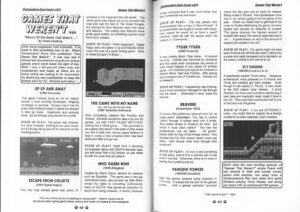
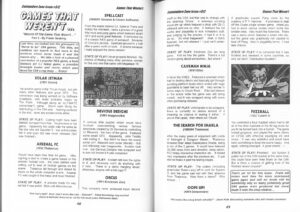
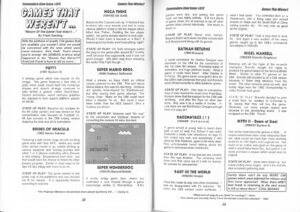
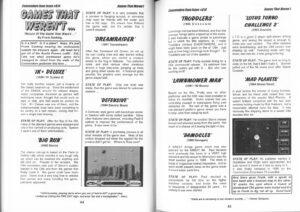
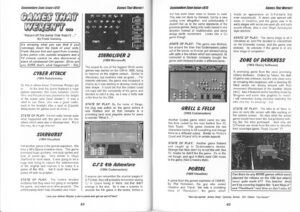
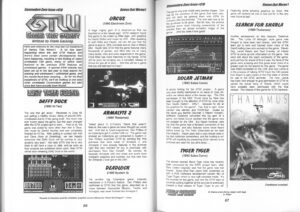
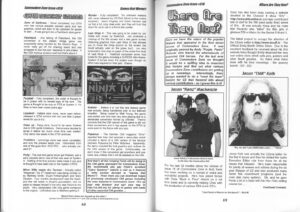

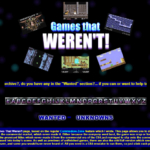





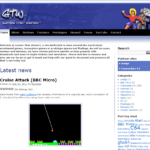




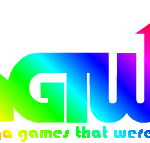
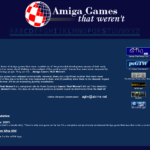


Long may you continue. Well done.
Great reading Frank. Digital archeology at its finest!
Thanks Dave, and thanks for all your help over the years. Can’t believe how quick it has gone!
Congratulations, Frank, on all the hard work, preservation, and documentation you and your team do! It’s always a thrill to visit your site and see what has been unearthed and saved for history.
Thanks Avram and for the very kind words!
Well done, buddy, a fantastic piece of Commodore 64 gaming discovery and archiving history
Thanks buddy and for all your support with it all too :)
Love this initiative so much, Frank! And the outcomes with released game versions are beyond any expectations of anyone! Keep the good work! \o/
Thanks Bago! It’s been a lot of fun over the years! :)
Aweseome work through the years. You now exist twice as long as the actual machine was commercial :) . Congratulations. To another 25 years.
Thanks Asphodel, that is pretty scary to think of it that way! :)
Amazing achievement, well done!
Thanks Alex, and thanks to all your help over the years too!